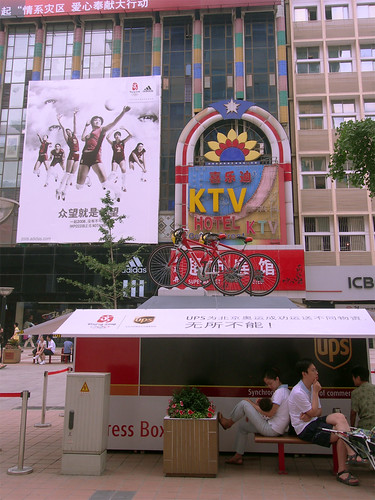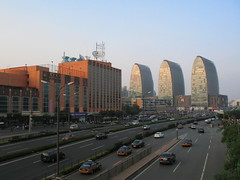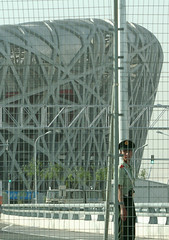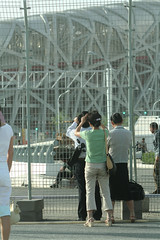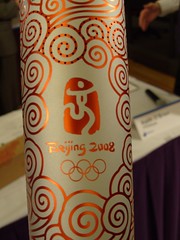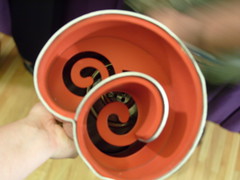The Summer Palace (Yihe Yuan) is a must visit tourist destination in Beijing. It’s huge (290 hectares or 716 acres) and lies next to the Kunming Lake.
My favourite part is the Marble Boat (Shi Fang). You may recognise it from various movies. There’s a story behind it. The Empress Dowager was supposed to put the money towards rebuilding the Chinese navy, but spent it on this instead. She had many critics, although I remember reading that one Chinese academic said that any fleet China put together back then would have been easily destroyed, but the Marble Boat is still there, so it must have been a good decision!
There’s a lot more to see and it’s all very worthwhile. Along with the Great Wall and the Forbidden City, the Summer Palace is part of the top 3 tourist destinations in Beijing.
 The Summer Palace in silhouette in front of a brilliant sky – by Amatourist
The Summer Palace in silhouette in front of a brilliant sky – by Amatourist
There are always a lot of tourists at the Summer Palace – any popular tourist destination in China is certainly going to be packed with people, which is a pity really. It’d be great if you could get the Summer Palace to yourself!
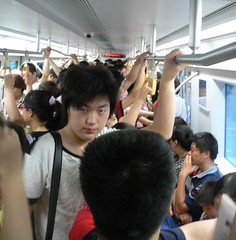

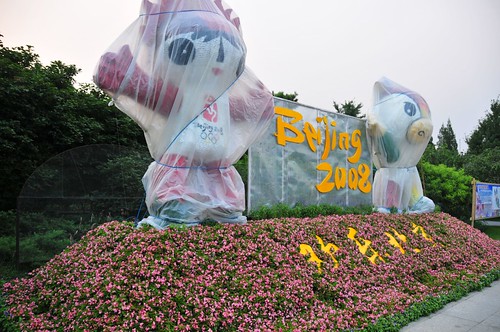
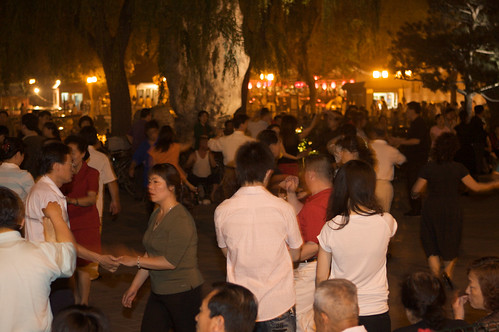 photo by
photo by 